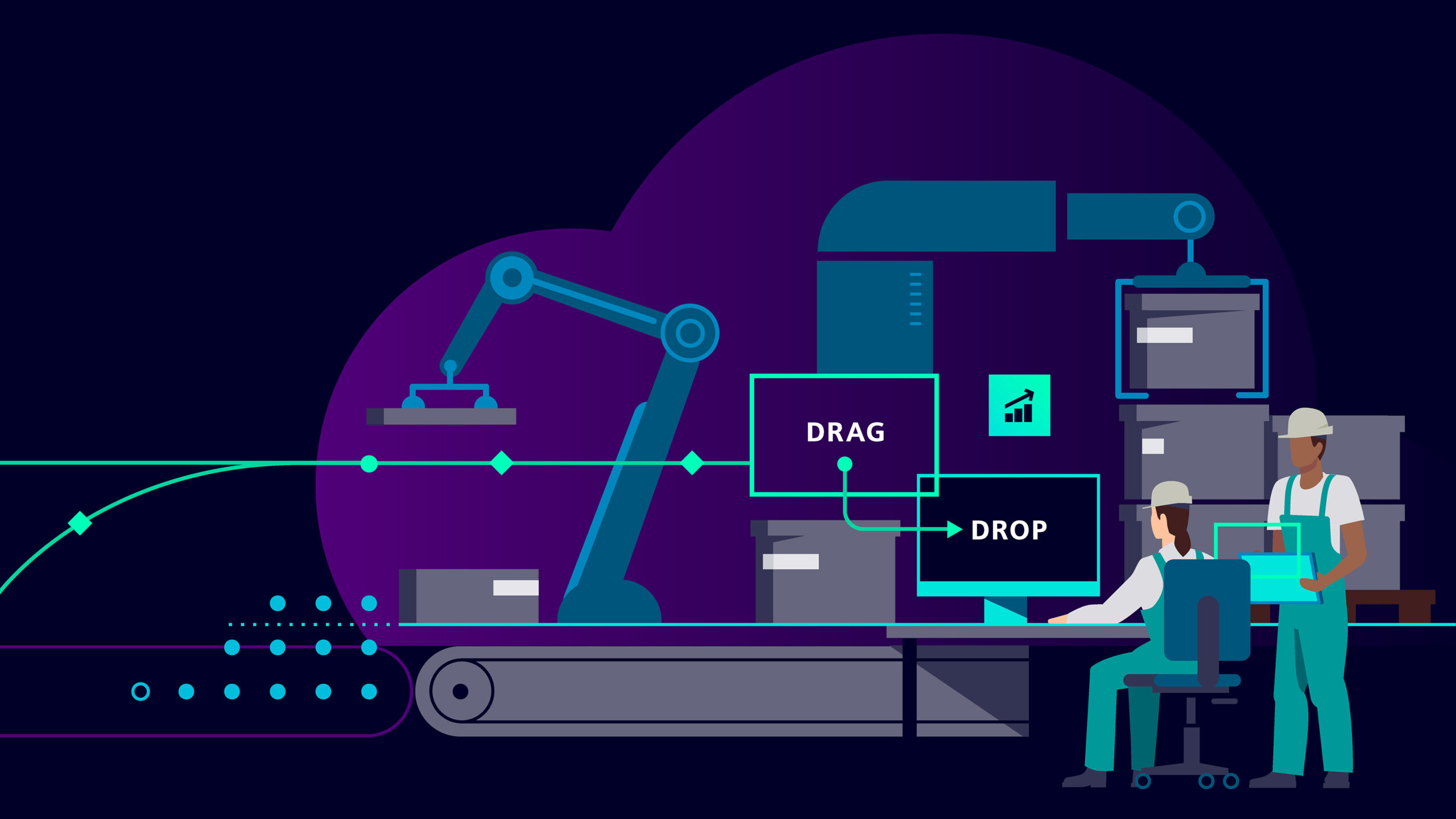The strategic role of low-code applications in enterprise transformation | Webinar recap

Low-code applications are emerging as pivotal tools for extending digital enterprises without the need for extensive custom coding or compromising core systems.
These applications, developed on platforms like Mendix, seamlessly integrate with existing systems through open architecture.
A recent webinar from Siemens takes a closer look at low-code solutions, how they can fill the gaps in existing systems and how manufacturers can begin to use low-code within their digital infrastructure.
Watch the webinar trailer
The growing interest in low-code solutions is reflected in recent statistics and demonstrated in their broad appeal across various industries. This blog explores the contents of the webinar and features some noteworthy clips.
Enhancing digital enterprises with low-code applications
The webinar begins by providing a broad definition of low-code applications and how they’re used.
Low-code applications are recognized for their potential to enhance digital enterprises without requiring customizations that might compromise core systems. These applications, developed on platforms like Mendix, are designed to integrate seamlessly with existing systems using open architecture.
This integration capability is pivotal because it ensures that the core functionalities of existing systems are not disrupted while new functionalities are added. The ease of development offered by low-code platforms significantly accelerates the delivery of personalized and tailored applications.
These applications can address specific organizational needs like managing incomplete records or adhering to key processes, all while maintaining the integrity of the connected systems.
The ability to develop these applications quickly and with fewer resources makes low-code development a practical solution for digital enterprises that aim to innovate rapidly and responsively.
Integration capabilities, ease of development, and the rapid delivery of personalized applications are key factors that make low-code an attractive option for organizations looking to enhance their digital strategy.
Phased approach to digital transformation with low-code
How does a manufacturing enterprise begin to implement low-code solutions? The webinar emphasizes slow and steady progress.
A phased approach, or a “crawl, walk, run” methodology, advocates for starting small with low-code development to enhance digital processes and experiences with the aim of gradual improvement and scaling digital solutions.
This kind of strategy not only facilitates manageable increments of digital integration but also aligns with the broader goal of creating a comprehensive digital twin within the digital enterprise.
With this method, manufacturers can more easily manage complexity and ensure effective integration of new technologies into existing systems.
The “crawl” phase includes simple, low-risk projects to gain familiarity with low-code platforms. This stage is marked by the development of composite apps that connect various systems like product lifecycle management (PLM) tools, manufacturing execution systems (MES), enterprise resource planning (ERP) and more. During this phase, low-code solutions prove their ability to streamline and enhance digital processes without the need for extensive custom coding.
The “walk” phase represents a progression where organizations begin to expand their use of low-code solutions. This phase consists of improving initial applications and when manufacturers start to see significant benefits from their efforts. Organizations begin to experience improved process efficiency and effectiveness, as well as new product innovations.
Finally, during the “run” phase, organizations fully scale their digital solutions, integrate advanced digital twins and leverage comprehensive data analytics to drive decision-making. This mature stage of digital transformation sees the full realization of the digital twin, supported by robust low-code applications that facilitate extensive data integration and real-time analytics. Throughout these phases, the use of low-code platforms plays a pivotal role in enabling organizations to develop and deploy effective digital solutions to address specific needs rapidly and with reduced complexity.
The impact of low-code on production environments
Integrating low-code platforms into production environments is considered a transformative approach. As the webinar continues, it looks at how manufacturers use this software to extend and enhance legacy systems.
Every manufacturing shop floor is unique, and low-code platforms facilitate the creation of personalized applications that encapsulate the specific processes and knowledge inherent to each manufacturer.
This customization ability is vital as it reflects the distinct operational methodologies of different manufacturing settings. Globalization and acquisitions diversify and expand legacy systems.
Low-code software can help improve manufacturing processes without any significant disruptions to production.
The role of low-code software in production environments extends beyond preserving legacy systems. It empowers manufacturers to innovate within their existing frameworks and enables the creation of new applications that integrate seamlessly with legacy systems.
This integration capability is vital for supporting specific, often complex processes that are tailored to the unique needs of the manufacturing sector. Plus, low-code platforms enhance the capability to manage and modify these systems with minimal disruption, a key factor in maintaining operational efficiency and compliance.
The role of low code in production environments is multifaceted, addressing both the preservation of essential legacy systems and the agile development of new solutions that enhance operational effectiveness.
As manufacturers continue to navigate the complexities of modern production landscapes, low-code platforms emerge as essential tools in the digital transformation journey, ensuring that legacy systems are not just preserved but are also dynamically enhanced to meet the current and future demands of the industry.
Transforming digital enterprises with low-code applications
Low-code applications are increasingly recognized as transformative tools within digital enterprises, enabling seamless integration and extension of existing systems.
Through platforms like Mendix, these applications allow for the rapid development of customized solutions that maintain the integrity of core systems while addressing specific organizational needs.
The ease of integration with open architectures ensures that these applications enhance operational efficiency without disrupting existing workflows.
As digital enterprises continue to evolve, low-code platforms are crucial for enabling quick adaptation and innovation, ensuring organizations remain competitive in a rapidly changing market.
Watch the complete webinar to learn how low-code applications can enhance user engagement, streamline processes, and improve overall system functionality. Find out why low-code solutions are an essential component of modern digital strategy.


